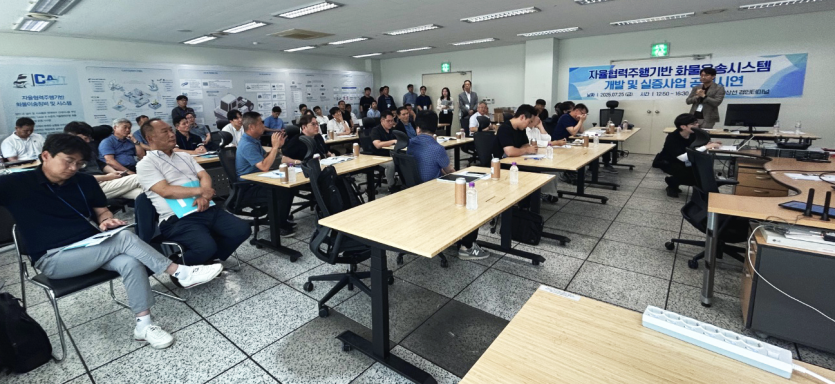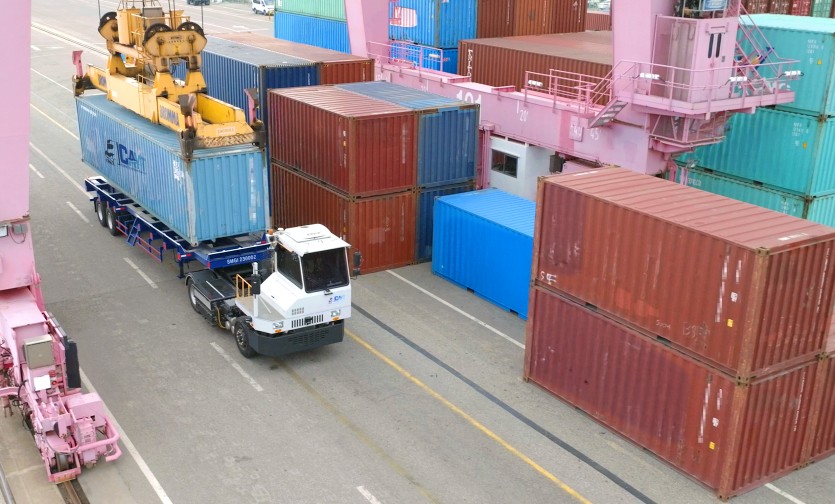CAYT Consortium Completes Final Demonstration of “Connected Autonomous Yard Truck System”
페이지 정보
본문
Held on the 25th at SM Line’s Gyeong-in Terminal
Advisory meeting on localization of core port equipment parts and systems also conducted
<On-site of the CAYT Consortium’s Final Demonstration of the Connected and Autonomous Yard Tractor (CAYT)-based
Cargo Transport System>
A demonstration of the “Autonomous Cooperative Driving-Based Freight Transport System,” which
loads and transports containers using the Connected and Autonomous Yard Tractor (CAYT), was held.
The CAYT Consortium completed the three-year project “Development and Demonstration of the
Autonomous Cooperative Driving-Based Freight Transport System” and conducted its final
demonstration on the 25th at SM Line’s Gyeong-in Terminal. About 40 representatives from domestic
port and terminal operators attended the event.
The demonstration focused on showcasing and verifying the entire CAYT autonomous transport
process—loading a 40-foot container, moving it, waiting when required, avoiding obstacles, and
finally loading it onto a vessel.
CAYT is equipment designed to autonomously transport container cargo within ports in connection
with other facilities and systems.
The Consortium verified all components of the system, including CAYT, the CAYT platform, the
autonomous cooperative driving control system, V2X digital infrastructure, and the control system,
and now plans to begin full-scale commercialization at domestic ports.
The final demonstration tested CAYT’s cargo transport process, including transport orders issued
by the Terminal Operating System (TOS), optimal route search and control managed by the Fleet
Management System (FMS), and sensor detection and control functions of the CAYT autonomous
control system.
Safety-optimized driving using V2X digital infrastructure was also validated. This infrastructure enables
data communication between the control and vehicle systems, detecting blind spot objects to ensure
safe operation of CAYT.
During the live demonstration, CAYT recognized a preceding CAYT waiting in its lane and, following
control guidance, either waited or changed lanes. Approaching a yard intersection, it temporarily
stopped, recalculated its path, and resumed driving. A scenario was also tested where a worker
suddenly approached the CAYT’s path, triggering emergency braking and re-routing before resuming
operation.
On the same day, the Consortium also held an advisory meeting for the Ministry of Oceans and
Fisheries’ project on the localization and advancement of core port equipment parts and systems.
The Consortium presented ways to connect its outcomes with major tasks such as “development of
advanced performance technologies for key parts of port automated transport equipment” and
“development of control and operation technologies for smart port equipment,” highlighting
directions to enhance commercialization potential.
The “Autonomous Cooperative Driving-Based Freight Transport System Development and Demonstration”
project aims to shift container transport in ports to an autonomous cooperative system, thereby
improving efficiency in an eco-friendly and safe manner.
Supported by the Ministry of Oceans and Fisheries and the Korea Institute of Marine Science &
Technology Promotion (KIMST), the project was led by Total Soft Bank with participation from Incheon Port
Authority, Seoul National University R&DB Foundation, Jeonbuk institute of automotive convergence
technology, EN Plus, SUM, Global NC, and SM Line’s Gyeong-in Terminal.
Busan=Dong-Sik Im dslim@etnews.com

